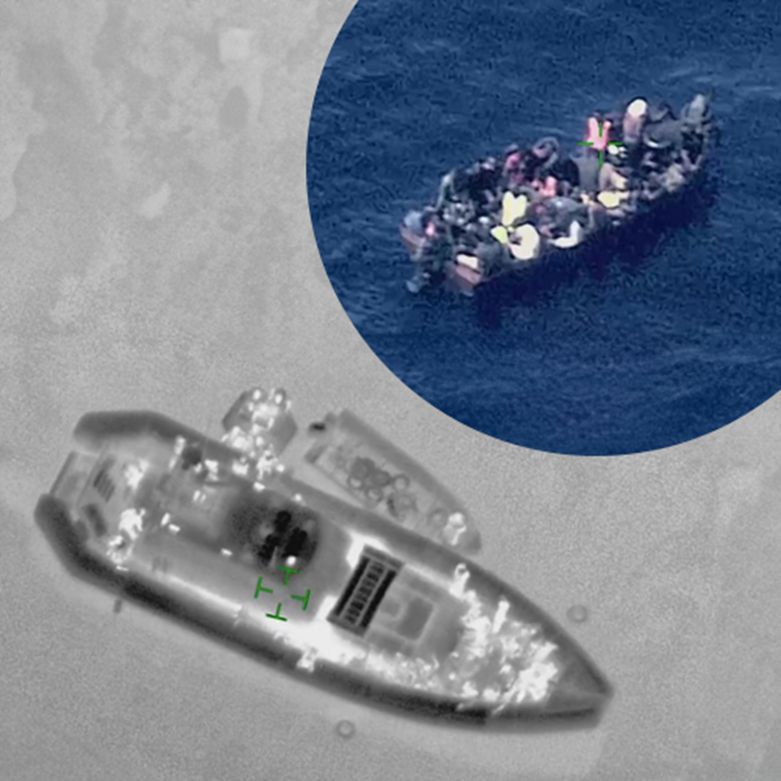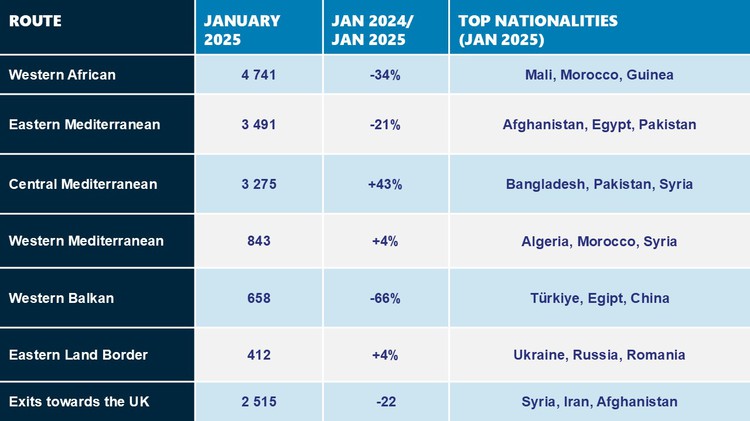According to data published on Tuesday, February 11, 2025, by the European Border and Coast Guard Agency (Frontex), the number of attempts to illegally cross the European Union’s external borders in January 2025 exceeded 13,400, representing a 22% decrease compared to the same month of the previous year.
Despite the overall decline, an increase in activity was recorded on the route in the central Mediterranean basin, although this increase reflects very low levels compared to the same period last year.
Key Events:
- The Western African route accounted for nearly one-third of all illegal crossings of the EU’s external borders in January.
- The highest increase in arrivals was recorded in the central Mediterranean basin: +43% year-on-year.
- The largest decline was observed on the Western Balkans route: -66% compared to January 2024.
- The most common nationalities of migrants: Afghan, Bangladeshi, and Pakistani (although the nationalities of many arrivals are still being verified).
Despite a 34% decrease compared to the previous year, the Western African route remained the most active migration route, with 4,741 arrivals in the first month of 2025. The largest share of illegal migrants came from Mali, Morocco, and Guinea.
In January, the route in the eastern Mediterranean basin was the second most active entry route to the European Union, with 3,491 cases. However, a 21% decrease in detected cases was recorded compared to the same month last year. The most frequently apprehended migrants were Afghans, Egyptians, and Pakistanis.
The largest increase in EU border violations, rising by +43% year-on-year to 3,275 people, was recorded on the route in the central Mediterranean basin, with most migrants coming from Bangladesh, Pakistan, and Syria.
Sea crossings, usually organized by criminal networks, continue to pose a significant threat to migrants. Data from the International Organization for Migration (IOM) indicate that 93 people lost their lives at sea in January. Throughout the entire previous year, this number reached 2,300, highlighting the tragic human cost of these dangerous routes.
On the English Channel route, the number of detected individuals attempting to cross the border to the United Kingdom dropped by more than one-fifth (-22%) compared to the previous year, reaching 2,515. The most frequently apprehended migrants were Syrians, Iranians, and Afghans.
On the Western Balkans route, 658 border crossing attempts were recorded, representing a significant decrease of -66%. The most common nationalities were Turkish, Egyptian, and Chinese.
On the route from the western Mediterranean basin, 843 crossing attempts were recorded, marking a +4% increase compared to the previous year. The most frequently apprehended migrants were Algerians, Moroccans, and Syrians.
On the eastern border of the EU (Poland, Lithuania, and Latvia with Belarus, and Poland with Ukraine), 412 border violations were recorded in January, representing a +4% increase compared to the same period last year. The majority of those apprehended were citizens of Ukraine, Russia, and Romania.
The latest data reflect shifting migration trends compared to the previous year. As authorities work to address these evolving challenges, monitoring and cooperation remain crucial for managing Europe’s external borders.
Frontex has 2,700 officers and civilian personnel deployed across Europe to assist national authorities in managing the EU’s external borders.



































